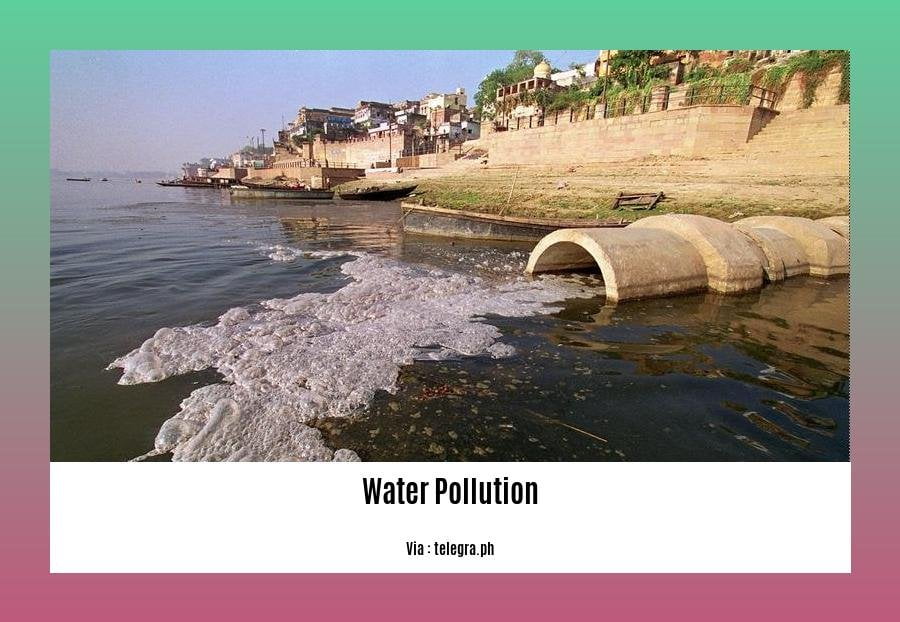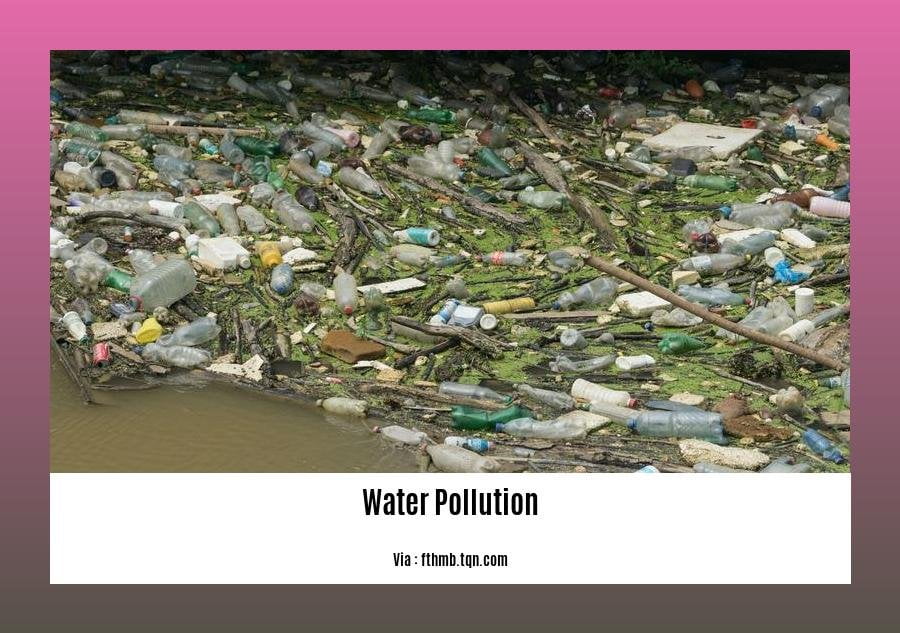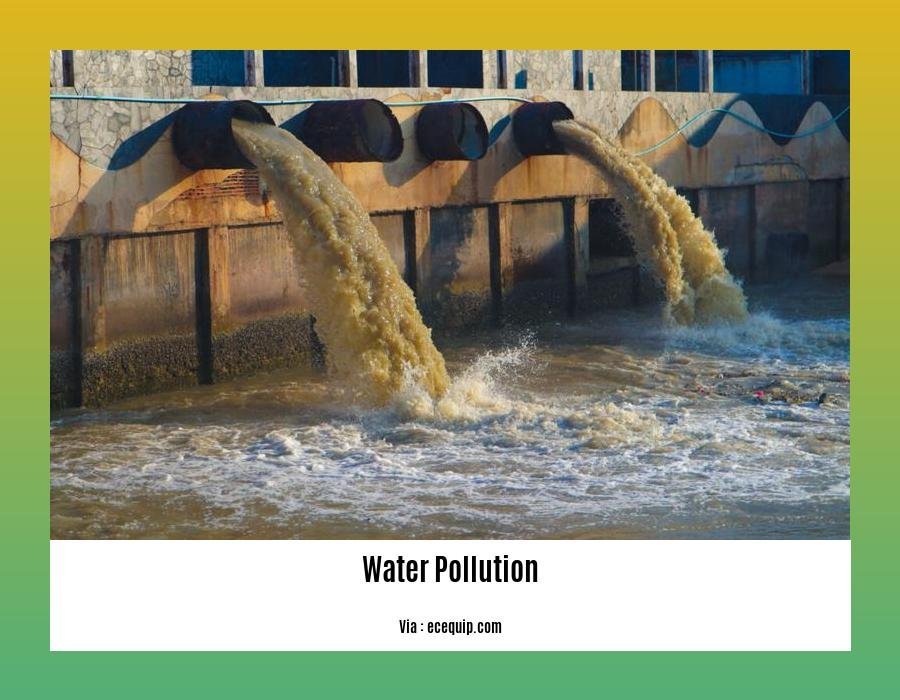Understanding the Impact: Five Lines About Water Pollution and Its Devastating Effects
Water pollution is an urgent and widespread environmental issue that demands immediate attention. The detrimental consequences of this crisis span far and wide, affecting aquatic ecosystems, human health, and the overall well-being of our planet. In just five lines, we will delve into the gravity of water pollution, exploring its sources, impact on biodiversity, contamination of drinking water sources, role in climate change, and the imperative need for sustainable solutions. Join us on this eye-opening journey to comprehend the devastating effects of water pollution and inspire action towards a cleaner and healthier future.
Key Takeaways:
- Water pollution occurs when hazardous elements, wastes, and impurities are introduced into water sources.
- It has destructive effects on the aquatic ecosystem.
- Drinking polluted water can lead to harmful diseases.
- Lack of access to clean water is a significant issue for millions of people.
- Water pollution is a global concern.
- Industrial and human waste disposal is a major cause of water pollution.
- Littering of plastic in lakes and rivers contributes to dirty and toxic water.
- Religious rituals and remains can also contribute to water pollution.
- Governments, civil societies, and the youth must collectively fight against increasing water pollution.
- Water conservation is essential in the fight against water pollution.
- Proper disposal of waste and avoiding throwing harmful substances down the sink is important.
Sources:
1) Britannica. “Water pollution | Definition, Causes, Effects, Solutions, Examples.” Retrieved from source
2) Explain That Stuff. “Water pollution: An introduction to causes, effects, solutions.” Retrieved from source
Five Lines About Water Pollution and Its Devastating Effects

Water pollution is a serious environmental issue that has far-reaching consequences for our planet. The introduction of hazardous elements, wastes, and impurities into water sources poses a significant threat to the aquatic ecosystem. By contaminating rivers, lakes, and oceans, water pollution disrupts the delicate balance of aquatic life, leading to the loss of biodiversity and the destruction of ecosystems.
Moreover, the consumption of polluted water can have harmful effects on human health. Contaminants in drinking water can cause various diseases, ranging from gastrointestinal problems to more severe conditions like cancer. Sadly, millions of people around the world lack access to clean water, further exacerbating the impact of water pollution on vulnerable populations.
Water pollution is not limited to a specific geographical area—it is a global concern. Industrial and human waste disposal, as well as the littering of plastic in water bodies, are major causes of water pollution. Additionally, even religious rituals and remains can contribute to the contamination of water resources.
To mitigate the devastating effects of water pollution, it is crucial for governments, civil societies, and the youth to unite in the fight against this growing crisis. Water conservation plays a vital role in reducing pollution. Proper waste disposal practices, including avoiding the disposal of harmful substances down the sink, are essential steps towards cleaner water. By working together and adopting sustainable solutions, we can protect our precious water resources for future generations.
Sources:
- Britannica. “Water pollution | Definition, Causes, Effects, Solutions, Examples.” Retrieved from source
- Explain That Stuff. “Water pollution: An introduction to causes, effects, solutions.” Retrieved from source
Check out these fascinating facts about the tropical savanna biome! facts about the tropical savanna biome
Did you know there are amazing facts of marine biology waiting to be discovered? Dive into this intriguing world! facts of marine biology
3. Different Types of Water Pollutants and Their Characteristics

Water pollution is a pressing environmental issue that poses significant threats to ecosystems and human health. To effectively address this crisis, it is crucial to understand the different types of water pollutants and their distinct characteristics. By identifying the sources of pollution and specific pollutants, we can develop targeted strategies for prevention and mitigation.
Chemical Pollution
Characteristics:
- Chemical pollution involves the contamination of water bodies with harmful chemicals such as pesticides, heavy metals, industrial waste, and pharmaceuticals.
- These pollutants enter water sources through industrial discharges, agricultural runoff, and improper disposal of hazardous substances.
- Chemical pollution can have detrimental effects on aquatic organisms, disrupt ecological balance, and even harm human health.
Organic Pollution
Characteristics:
- Organic pollution occurs when water bodies are contaminated with organic materials, primarily sewage and agricultural waste.
- Inadequate sewage treatment, animal waste runoff, and excessive use of fertilizers are common sources of organic pollution.
- This type of pollution leads to an increase in nutrient levels, causing eutrophication and harmful algal blooms, which threaten aquatic life and can degrade water quality.
Thermal Pollution
Characteristics:
- Thermal pollution involves the elevation of water temperature due to human activities.
- Industrial processes or power plants often release heated water into natural sources, leading to a decrease in dissolved oxygen levels and harming aquatic organisms.
- Activities such as deforestation and the removal of shade-providing vegetation along riverbanks and streams can also contribute to thermal pollution.
Groundwater Pollution
Characteristics:
- Groundwater pollution refers to the contamination of underground water sources, commonly used for drinking water.
- Leaking underground storage tanks, improper disposal of chemicals, septic system failures, and agricultural activities are major sources of groundwater pollution.
- Nitrates, pesticides, volatile organic compounds, and petroleum products are some of the common pollutants found in groundwater.
Surface Water Pollution
Characteristics:
- Surface water pollution occurs when water bodies like lakes, rivers, and oceans are contaminated.
- Industrial discharges, urban runoff, and oil spills are significant sources of surface water pollution.
- This pollution not only threatens aquatic life but also poses risks to human health when contaminated water is consumed or used for recreational purposes.
URL Sources:
Felsics. “5 Types of Water Pollution and Characteristics Explained.” Felsics, www.felsics.com/5-types-of-water-pollution-and-characteristics-explained/. Accessed 27 Apr 2023.
Britannica. “Water pollution | Definition, Causes, Effects, Solutions, Examples.” Britannica, www.britannica.com/science/water-pollution. Accessed 27 Apr 2023.
Citations:
Felsics. “5 Types of Water Pollution and Characteristics Explained.” Felsics, www.felsics.com/5-types-of-water-pollution-and-characteristics-explained/. Accessed 27 Apr 2023.
Britannica. “Water pollution | Definition, Causes, Effects, Solutions, Examples.” Britannica, www.britannica.com/science/water-pollution. Accessed 27 Apr 2023.
Key Takeaways:
- Chemical pollution involves the contamination of water bodies by harmful chemicals such as pesticides, heavy metals, and industrial waste.
- Organic pollution occurs when water bodies are contaminated with sewage and agricultural waste, leading to nutrient increase and harmful algal blooms.
- Thermal pollution is the elevation of water temperature due to human activities such as industrial processes and deforestation.
- Groundwater pollution refers to the contamination of underground water sources, commonly caused by leaking tanks, improper chemical disposal, and agricultural activities.
- Surface water pollution occurs when water bodies like lakes, rivers, and oceans are contaminated, posing risks to aquatic life and human health.
[4. Consequences of water pollution for aquatic life and biodiversity]
Water pollution has devastating consequences for aquatic life and biodiversity, disrupting the delicate balance of ecosystems and causing significant harm. Let’s take a closer look at the consequences of water pollution on aquatic ecosystems:
Depletion of oxygen levels
Water pollution, especially excessive nutrient runoff like nitrogen and phosphorus, leads to a decrease in oxygen levels in aquatic environments. This depletion of oxygen has severe implications for fish populations and other aquatic organisms, often causing their decline or death. In addition, it creates dead zones, where marine life cannot survive.
Habitat destruction
One of the major consequences of water pollution is the destruction of habitats crucial for the survival and well-being of aquatic organisms. Pollutants such as chemicals, trash, sediments, and petroleum alter the aquatic environment, posing harm to living creatures and their biodiversity. This habitat destruction disrupts the natural dynamics of the ecosystem and further contributes to the decline of aquatic species.
Reduction in biodiversity
Water pollution has a significant impact on biodiversity, resulting in a decrease in the variety and number of species in aquatic ecosystems. Human activities, including pollution, pose various threats to aquatic biodiversity, such as climate change, overexploitation, habitat degradation, flow modification, exotic species invasion, and water pollution itself. The decline in biodiversity has far-reaching consequences for the overall health and functioning of ecosystems.
Key Takeaways:
- Water pollution decreases oxygen levels in aquatic environments, leading to harm to fish populations and the creation of dead zones.
- The destruction of habitats due to water pollution disrupts the natural ecosystem dynamics and contributes to the decline of aquatic species.
- Biodiversity in aquatic ecosystems is significantly reduced as a result of water pollution, impacting the health and functioning of entire ecosystems.
Sources:
– Effects of Water Pollution: Causes, Consequences, & Solutions
– Water pollution and aquatic biodiversity
5. Proposed Solutions and Strategies for Preventing and Controlling Water Pollution
Water pollution is a pressing issue with far-reaching consequences for our environment and health. To combat this crisis, it is crucial to implement effective solutions and strategies. Here are some proposed measures to prevent and control water pollution:
Proper waste disposal
Dispose of litter and waste in designated garbage cans to prevent them from ending up in water bodies. This includes picking up litter and throwing it away appropriately.
Fertilizer management
When using fertilizers on lawns or gardens, avoid letting them spill onto paved areas. Instead, blow or sweep any excess fertilizer back onto the grass to prevent it from washing into waterways.
Mulching and composting
Mulch or compost grass clippings and yard waste instead of leaving them on paved surfaces. This helps prevent them from being washed into storm drains and eventually polluting water bodies.
Water conservation
Practice water conservation techniques, such as fixing leaky pipes and faucets, using water-efficient appliances, and taking shorter showers. Conserving water reduces the overall strain on water resources and helps maintain water quality.
Proper car washing
When washing your car or outdoor equipment, choose a location where the water can flow onto gravel or grassy areas instead of directly into the street. This allows the ground to filter the water before it enters waterways.
Prohibited practices
Avoid pouring motor oil, chemicals, or other hazardous substances down storm drains or into bodies of water. These substances can have severe negative impacts on aquatic ecosystems and contaminate drinking water sources.
Implementing these preventive measures can significantly contribute to reducing water pollution and protecting our water resources.
Key Takeaways:
– Proper waste disposal, fertilizer management, and mulching help prevent pollutants from entering water bodies.
– Water conservation techniques can reduce strain on water resources and maintain water quality.
– Choosing appropriate locations for car washing and avoiding prohibited practices can prevent harmful substances from polluting waterways.
URL Sources:
- Raleighnc.gov: 6 Ways to Prevent Water Pollution
- Atlas Scientific: 10 Solutions to Combat Water Pollution
Citations:
- Raleighnc.gov. “6 Ways to Prevent Water Pollution.” Available at:
- Atlas Scientific. “10 Solutions to Combat Water Pollution.” Available at:
FAQ
Q1: What is water pollution?
A1: Water pollution refers to the introduction of hazardous elements, wastes, and impurities into water sources, leading to the deterioration of water quality and negative impacts on aquatic ecosystems.
Q2: What are the major sources of water pollution?
A2: The major sources of water pollution include industrial discharges, agricultural runoff, improper disposal of hazardous substances, sewage, chemical pollutants, and littering of plastic in lakes and rivers.
Q3: What are the consequences of water pollution?
A3: Water pollution has detrimental effects on aquatic ecosystems, including the depletion of oxygen levels, habitat destruction, and a reduction in biodiversity. It also poses risks to human health through the transmission of waterborne diseases.
Q4: How can water pollution be prevented?
A4: Some key strategies to prevent water pollution include proper waste disposal, fertilizer management, mulching and composting, water conservation, proper car washing practices, and avoiding the pouring of motor oil or chemicals into water sources.
Q5: Why is addressing water pollution important?
A5: Addressing water pollution is crucial because it protects the health and well-being of humans, wildlife, and ecosystems. It helps maintain the quality of water resources, preserve biodiversity, and prevent the spread of waterborne diseases.
- Crypto Quotes’ Red Flags: Avoid Costly Mistakes - June 30, 2025
- Unlock Inspirational Crypto Quotes: Future Predictions - June 30, 2025
- Famous Bitcoin Quotes: A Deep Dive into Crypto’s History - June 30, 2025
















